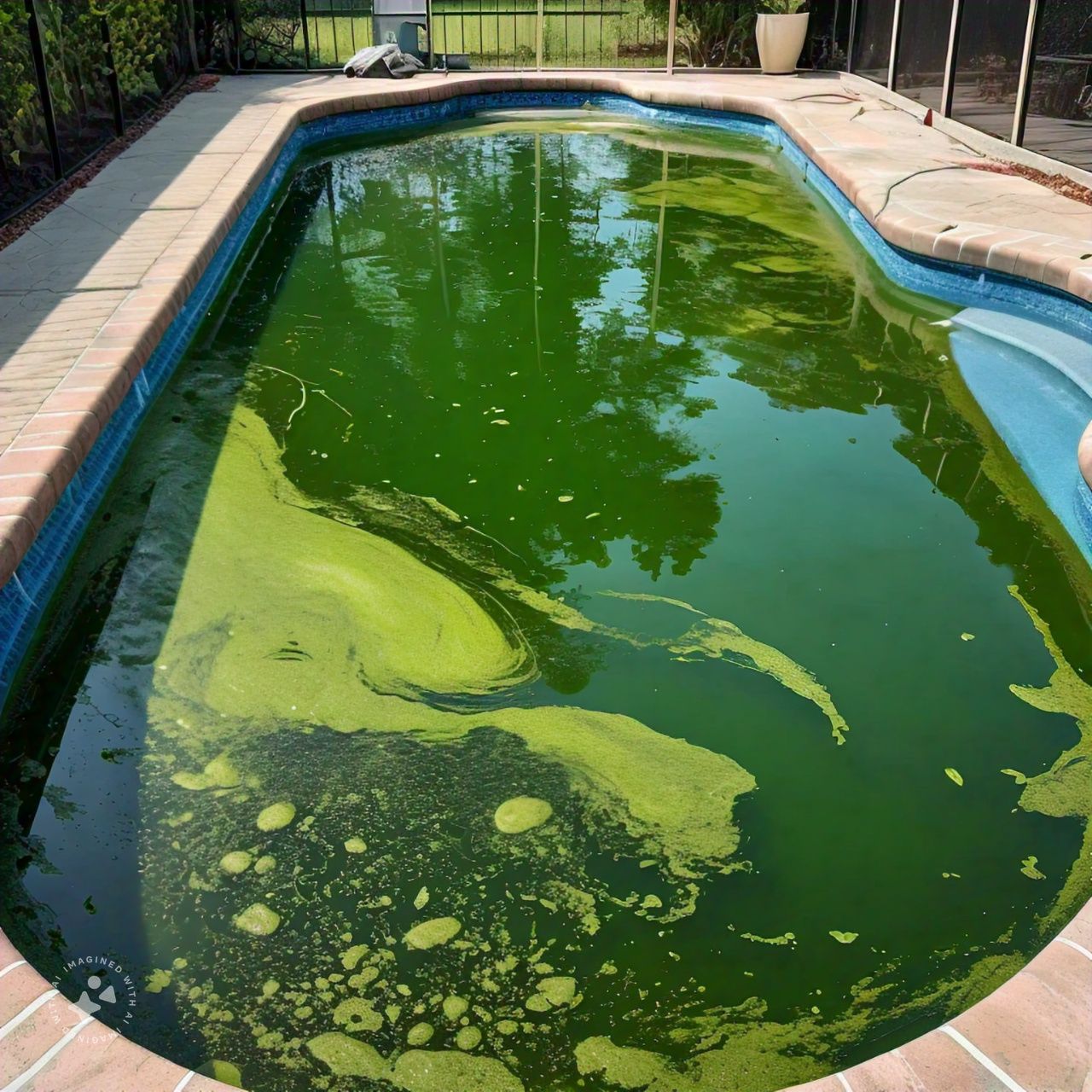Few things are as frustrating for pool owners as the sight of green water and slimy walls, indicating the presence of algae. Algae growth is common, especially during hot months, but it can be managed with regular maintenance and the right treatments. Here’s a guide to preventing and treating algae in your swimming pool, keeping your water clear and inviting all season long.
Understanding Algae and How It Grows in Pools
Algae are tiny, plant-like organisms that thrive in warm, sunny environments, making swimming pools the perfect breeding ground. Algae spores are constantly introduced to the pool through wind, rain, or even on swimmers, so maintaining proper pool care is essential to prevent growth.
- Common Types of Pool Algae: Green, yellow (mustard), and black algae are the most common types found in pools. Green algae are the easiest to remove, while black algae are stubborn and can root deeply in pool surfaces.
- Conditions that Promote Growth: Poor circulation, low chlorine levels, warm temperatures, and high pH levels can contribute to algae growth, turning your pool green in just a few days.
- Why It Matters: Understanding the conditions that encourage algae growth helps you take proactive steps to prevent an infestation before it begins.
Regular Cleaning and Brushing
Regular cleaning prevents buildup and disrupts any spores before they have a chance to bloom.
- Skimming and Vacuuming: Skim the surface daily to remove leaves, bugs, and debris that could contribute to algae growth. Vacuum the pool weekly to clean the floor and remove settled particles.
- Brushing the Walls and Floor: Algae love to cling to pool walls and floors, so use a stiff pool brush weekly to scrub surfaces, paying close attention to corners, steps, and other hard-to-reach areas.
- Clean Filters Regularly: A clean filter is essential for capturing spores and debris. Make sure to backwash or clean your pool filter as per manufacturer guidelines to maintain optimal filtration.
- Why It Matters: Consistent pool maintenance in Long Island removes contaminants and disrupts potential algae, reducing the chance of an infestation.
Maintain Proper Water Chemistry
Balanced pool water is one of the best defenses against algae. Monitoring and adjusting your pool’s chemical levels keeps the water clean and algae-free.
- Chlorine Levels: Chlorine is a powerful sanitizer that kills algae spores on contact. Keep free chlorine levels between 1-3 ppm (parts per million) to maintain proper sanitation.
- pH Balance: Algae thrive in high pH levels, so keep the pH between 7.2 and 7.6 to limit growth potential. High pH also reduces chlorine’s effectiveness, making it harder to keep algae at bay.
- Alkalinity and Calcium Hardness: Maintaining total alkalinity between 80-120 ppm and calcium hardness between 200-400 ppm helps stabilize the pH and prevents algae-friendly conditions.
- Why It Matters: Proper water balance ensures that chlorine remains effective, creating an inhospitable environment for algae growth.
Use Algaecide as a Preventive Measure
Algaecide is a chemical treatment specifically designed to kill and prevent algae. Adding it to your pool weekly, especially during warmer months, is an effective way to prevent algae growth.
- Types of Algaecides: Quaternary ammonium compounds (quats) and copper-based algaecides are commonly used. Quats are affordable and effective for regular use, while copper-based algaecides are more potent for tackling stubborn algae
- When to Apply Algaecide: Apply algaecide after a shock treatment or as part of your weekly maintenance routine, particularly if your pool is exposed to heavy sunlight or after a rainstorm.
- Proper Dosage: Follow the manufacturer’s instructions for correct dosing, as using too much can lead to foaming or staining, while too little won’t be effective.
- Why It Matters: Algaecides offer added protection against algae, keeping your pool water clean and clear, especially during high-risk times.
Conclusion
Preventing and treating algae in your pool is achievable with a consistent maintenance routine that includes cleaning, balanced water chemistry, shock treatments, and filtration. Remember, regular care is the key to avoiding algae outbreaks, so invest in a routine that will keep your pool looking its best.
FAQs
1. How often should I brush my pool to prevent algae?
Brushing your pool once a week is recommended, though you may want to increase frequency during hot weather when algae growth is more common.
2. What should I do if I see black algae in my pool?
Black algae is stubborn and requires aggressive treatment. Use a brush with stiff bristles, shock the pool, and apply a copper-based algaecide for best results.
3. How can I prevent algae after a rainstorm?
Rain can dilute chemicals and introduce contaminants. Test and adjust chlorine and pH levels, and consider adding algaecide after a heavy rain.
4. Can I use household bleach to treat pool algae?
While bleach can work in a pinch, it’s better to use pool-grade chlorine, as it is specially formulated for pools and ensures balanced treatment.
5. What’s the ideal pH range for algae prevention?
Keeping the pH between 7.2 and 7.6 helps prevent algae and keeps chlorine functioning effectively.
